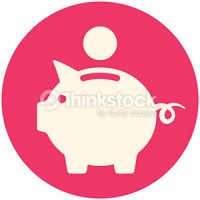Consumers still frugal after last recession
- Details
- Published on Friday, 22 July 2016 15:52
- Written by The Peorian
Tightfisted. Frugal. Fiscally cautious. Call it what you want, but it's clear that the lingering effects of yesteryear's Great Recession still have U.S. consumers less likely to amass unnecessary debt, more likely to save, and more reluctant to spend compared to the past.
The result is the prospect of a more financially sound—but also less financially optimistic—consumer, according to market research firm Packaged Facts in the reportConsumer Banking and Borrowing: U.S. Market Trends.
The recession significantly reshaped how consumers approach debt—and it still does. Packaged Facts data indicate that 72 percent of consumers say that because of the recession, they are more conservative about taking on debt, a tendency that is relatively uniform across demographic segments surveyed in the report. This guiding attitude has likely helped shape consumers' generally more conservative use of revolving credit and mortgage debt, even while conservative loan standards crimp demand.'
"What we are seeing is that most consumers view their financial situation with uncertainty, a perception that likely affects how they plan for and execute financial decisions. It suggests a more risk-averse consumer who is less likely to take on high debt loads or make rash major financial decisions, one who remains more frugal than prior to the Great Recession," saidDavid Sprinkle, research director for Packaged Facts.
Packaged Facts also found that only 1 in 5 adults strongly agree that they are very good at managing money, and only 1 in 10 (10%) strongly agree that they are financially secure. Both beliefs indicate that there remains an important role for financial institutions capable of successfully marketing their ability to help consumers manage money and build financial security. In the report, Packaged Facts suggests that this type of marketing can start with everyday account and payment products, which has the doubled effect of reaching the widest swath of consumers and providing institutions with upselling candidates in the bargain.
Prior the recession, consumer debt loads had reached alarming levels and consumer savings rates were near historical lows—if not a recipe for disaster, then major ingredients for one, notes Sprinkle. As the recession set in, so did consumer pessimism and a far more difficult credit environment—and the savings rate rebounded.
Most economists have greeted the increase in the personal savings rate positively, with the view that anemic savings rates racked up prior to recession (during the consumer debt party) were unsustainable over time and suggested that consumers were spending beyond their means. We are now seeing an increase in the savings rate to historical levels, which long-term will help create more financially stable households throughout the country.
However, the immediate effect is that each dollar saved is not a dollar spent. In dollar terms, personal saving stood at$686 billionin 2015, putting the personal savings rate at 5.1 percent (per the U.S. Bureau of Economic Analysis). Therefore, every 1 percent change in the savings rate translates to a roughly$120 billiondeducted from consumer spending. This helps explain why consumer spending has not been the major factor driving post-recovery growth that it has been in decades past, and why consumer borrowing trends (student loans excepted) have remained relatively moderate.
Without more to cheer the consumer going forward (stronger wage growth and additional conversion of part-time to full-time employment would do), on top of lingering debt lessons learned from the recession, the consumer will likely continue to steer the same course.
Consumer Banking and Borrowing: U.S. Market Trendsis designed to help market participants navigate and succeed in the financial services industry. The report provides trend-forward analysis of the consumer banking and borrowing market, focusing on commercial banks, credit unions, and savings institutions, with supplemental analysis of finance companies, as well as emerging banking alternatives..


















































